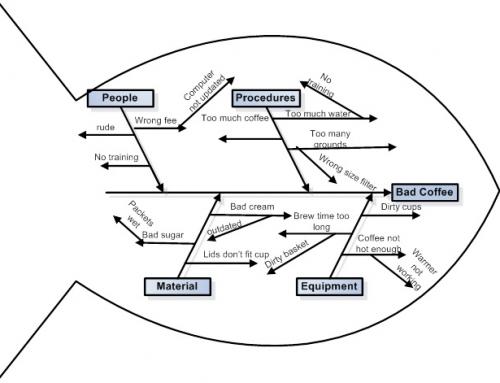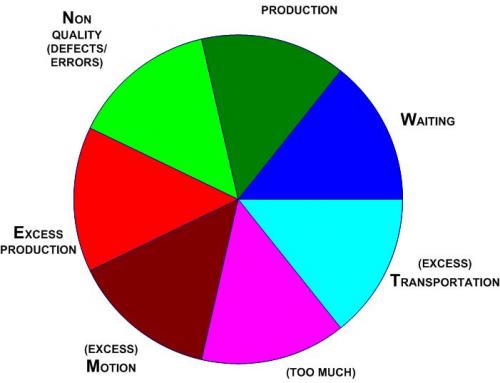Thank you for joining me, as we share a few tips and process optimization tools to gain efficiency.
Over the next few weeks we will glimpse at a few ideas that have arisen from the Six Sigma methodology, started by Bill Smith at Motorola in the 1980s, which led to many companies improving their productivity.
We translate some of the common terms to see how they relate to any organization today.
Today we kick off by translating SIX SIGMA, DMAIC, CTQ & SIPOC.
The ultimate goal is to achieve better quality in less time, with fewer dollars.
However, in reality, 1 of those aspects is sacrificed when boosting the other 2.
The sweet spot is ultimate customer satisfaction when these 3 goals are balanced.
Bill Smith and Bob Galvin, both of Motorola, developed the Six Sigma quality improvement process in 1986.
The idea of Six Sigma is to improve quality so that the number of defects becomes so few that they are statistically insignificant. But where does this name come from?
SIX SIGMA is a problem solving methodology for improving business and organizational performance.
Named after the statistical concept sigma (Greek letter upper-case ? or lower-case ?), representing standard deviation (measure of variation in a product/process). Variation, or deviation from expected or ideal state, is the cause of errors or defects.
An error/defect is any instance or event whereby a process fails to meet the customer’s requirements.
Sigma thus symbolizes deviation from perfection.
SIGMA improvement is coined when the outcomes of a process improve so significantly, turning the perceived “impossible” into “WHAT IS POSSIBLE”.
The Yield of the process is the percentage of items withOUT defects, e.g.
If your Yield is Defects Per Million Opportunities (DPMO) is Then your
Sigma is

from this table we observe that SIX SIGMA is the statistical term for a process producing less than 3.4 errors/defects per million opportunities for defects.
To try to reach SIX SIGMA, one embarks on a quest; a repetitive cycle of continuous improvement:

I
DMAIC: Define -> Measure -> Analyze -> Improve -> Control , repeat…
In essence, SIX SIGMA is a desirable target to significantly reduce errors/defects, via process improvement/redesign/management, thereby greatly improving customer satisfaction.
DMAIC is a highly favoured continuous improvement, problem solving methodology, an expansion on Deming’s Plan, Do, Check, Act, (PDCA).


Some believe that PDCA is most applicable in a medium sized problem, taking on average a week to resolve. with DMAIC more suited to bigger challenges, that have lots of available data, taking more than 3 months.
Regardless, both display the KAIZEN philosophy… a continuous improvement problem solving methodology.
HOW YOU CAN USE THIS?
By following the DMAIC cycle repeatedly, one can build a mindset to continuously improve efficiency and effectiveness of existing products/services.
SIX SIGMA starts with identifying critical-to-quality (CTQ) components of a process, with the ultimate goal of reducing expenses by aiming for perfecting the processes.
Your customers define what quality means in terms of your product/service.
Critical to quality (CTQ) embodies the essentials of satisfying your customers’ requirements.


Each process may have many CTQ factors that can be prioritized.
In this example of training of new hires, we identify:
1. the key need,
2. drivers of that need, in other words, the aspects your customer will evaluate the product or service’s quality, and
3. how each driver will be measured, in terms of numbers.
HOW YOU CAN USE THIS?
By focusing on improving the higher priority (from the customer’s perspective) factors of any process, one can positively impact the bottom line.
When you understand what your customers want (via CTQ described above), you can revisit the components associated with delivering a CTQ product.
SIPOC is an activity encompassing 5 steps, transforming inputs to outputs:
Suppliers -> Inputs -> Process -> Outputs-> Customers
whereby a process transforms materials/information into products/services.
We illustrate SIPOC with our example of an Operator delivering a daily service:

HOW YOU CAN USE THIS?
By focusing on improving process efficiencies around value added products/services, that the customer is more willing to pay for, one can positively impact the bottom line.
Quick RECAP:
We reviewed the meanings and applicability of
SIX SIGMA, DMAIC, CTQ and SIPOC.
SIGMA symbolizes deviation from perfection and, more specifically, is the statistical term for a process producing < 3.4 errors per million opportunities for defects.
Being the desired result of improving operational performance, SIX SIGMA can be achieved through the repetitive cycle of DMAIC.
DMAIC: Define -> Measure -> Analyze -> Improve -> Control , repeat…
CTQ (Critical to quality) embodies the essentials of satisfying your customers’ requirements, to help define those requirements at a measurable, granular level.
Once you know what your customers want, you can use
SIPOC: Suppliers -> Inputs -> Process -> Outputs-> Customers
to identify the components associated with delivering CTQ product or service.
Please keep a lookout for Part 2, when we look at some more tools to help define & analyze process improvements, e.g. PARETO, MUDA and KANO.
Please email us via the sidebar on the right hand side of this page, to download a free Critical-to-Quality (CTQ & SIPOC) excel worksheet in your email. This is an easy to use spreadsheet with two worksheets to assist you with defining components that comprise a product/service, then identifying Critical-To-Quality aspects of related processes.
Thank you for reading my blog. Hope you find this information helpful.
Please checkout the 2nd blog in this series.
Fay Rakoff
REFERENCES
Brue, G. (2015). Six Sigma for Managers Second Edition. United States: McGraw-Hill Education.
George, M. L., & Rowlands, D., & Price, M., & Maxey, J. (2005). Lean Six Sigma Pocket Toolbook. United States: George Group
Gygi, C., & DeCarlo, N., & Williams, B. (2005). Six Sigma for Dummies. Indiana: Wiley Publishing, Inc.
Gygi, C., & DeCarlo, N., & Williams, B. (2012). Six Sigma for Dummies 2nd Edition. New Jersey: John Wiley & Sons, Inc.
Kallet, M. (2014). Think Smarter. New Jersey: John Wiley & Sons, Inc.
KellyLawless. (2013). Fishbone BadCoffeeExample.jpg (Own work).
Pande, P. S., & Neuman, R. P., & Cavanaugh, R. R. (2014). The Six Sigma Way Second Edition. United States: McGraw-Hill Education.
Ries, E. (2011). The Lean Startup. New York: Crown Business.
Robertson, B. J. (2015). Holacracy. New York: Henry Holt and Company, LLC.
Thompson, J. (1997). The Lean Office. Canada: Productive Publications








Leave A Comment